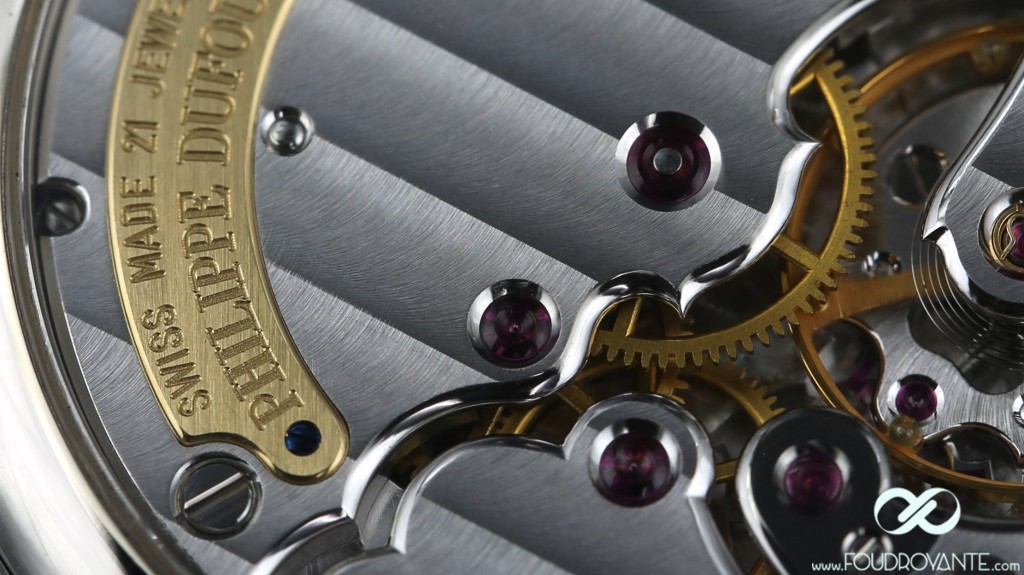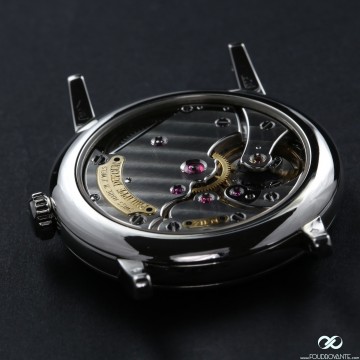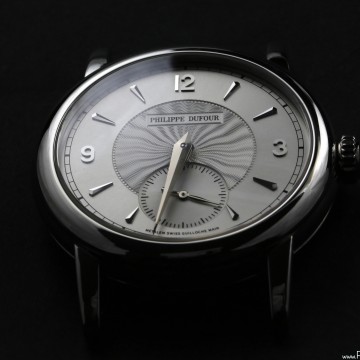Philippe Dufour Simplicity: In search of the lost time: the finishes 3/3
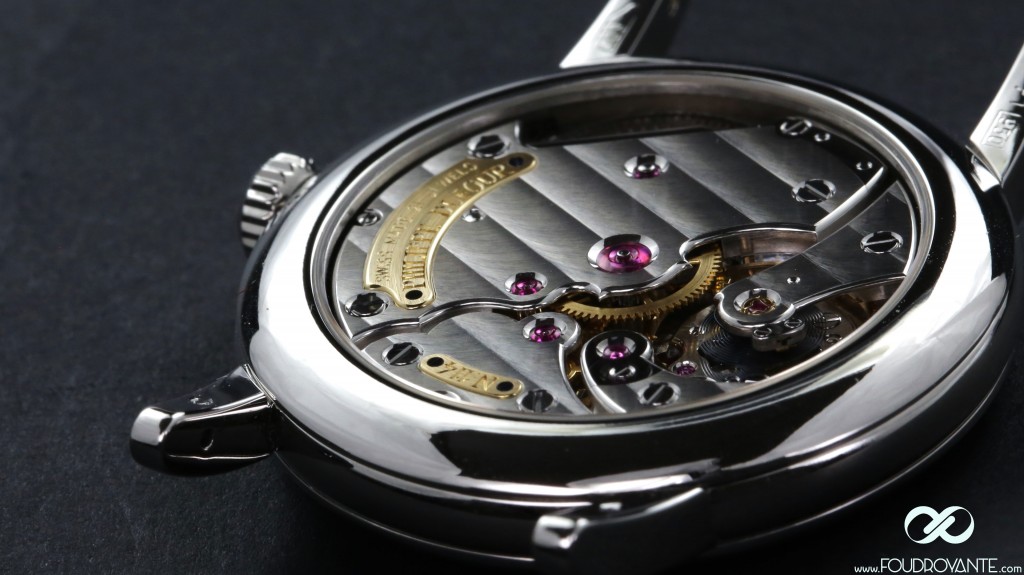
Hi,
Here are the finishes featured on the Simplicity:
- Dont hesitate to use the right click & open in a new tap, to see the full
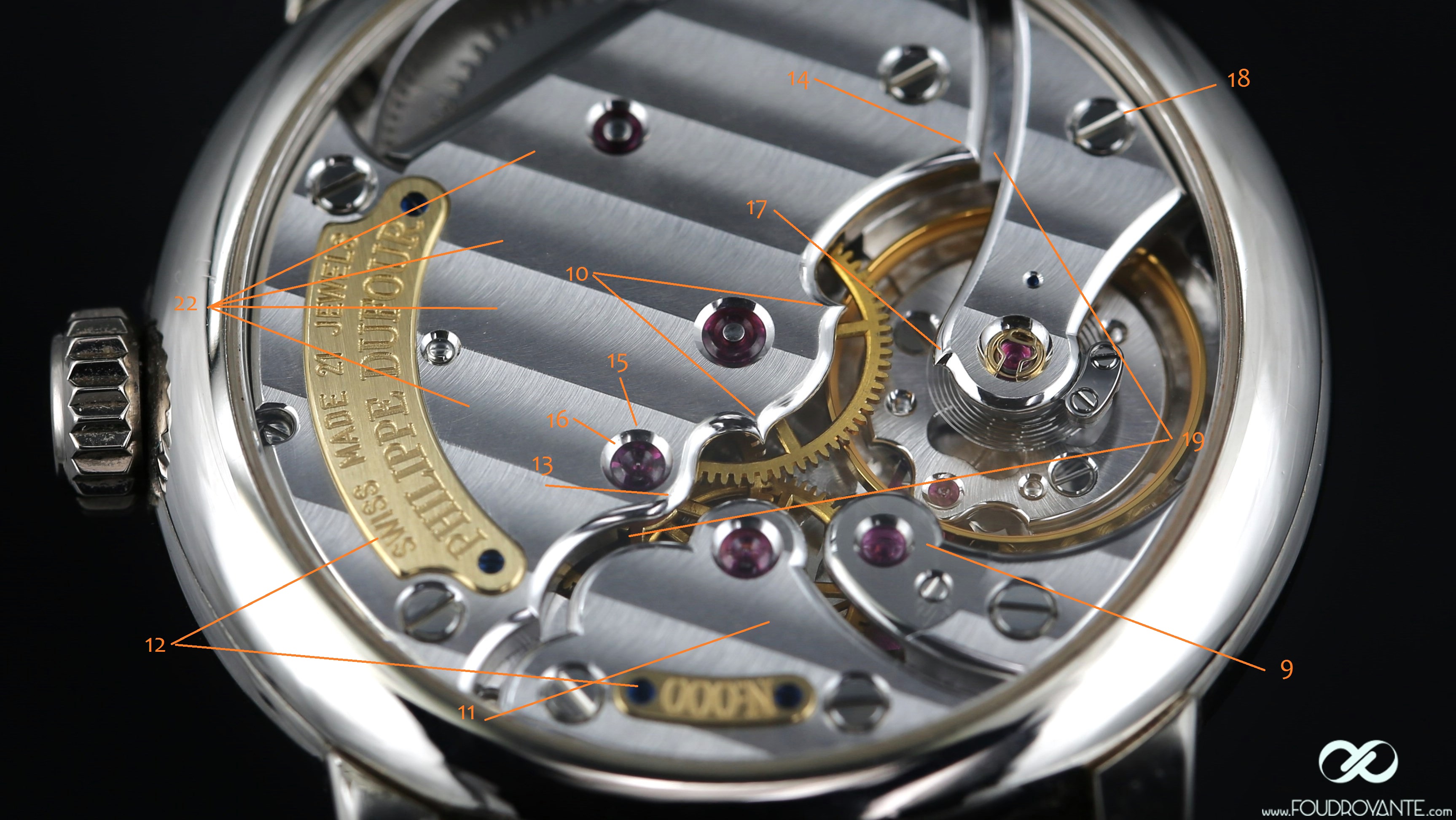
9-Escapement wheel bridge stainless steel plate: home-made
From all the axles in the movement, the escapement wheel shaft sustains the highest mechanical stress. A counter-bearing is necessary (an extra jewel which maintains the end of the shaft). It is secured by a stainless steel plate.
The trick is to perfectly align the plate with the maillechort bridge. The plate is mounted and its height is measured: if it is too thick, it is put aside and slightly polished in order to remove a few extra microns. However, if too much metal is removed, the part must be discarded.
To secure the escapement wheel axle, Philippe could have opted for a modern bloc end-piece.
But he went for something more complex, as much for the good workmanship spirit as for history. This technical choice is a tribute to pocket watches: at this period, when anti-shock devices didn’t exist, high-end pieces often relied on this solution.
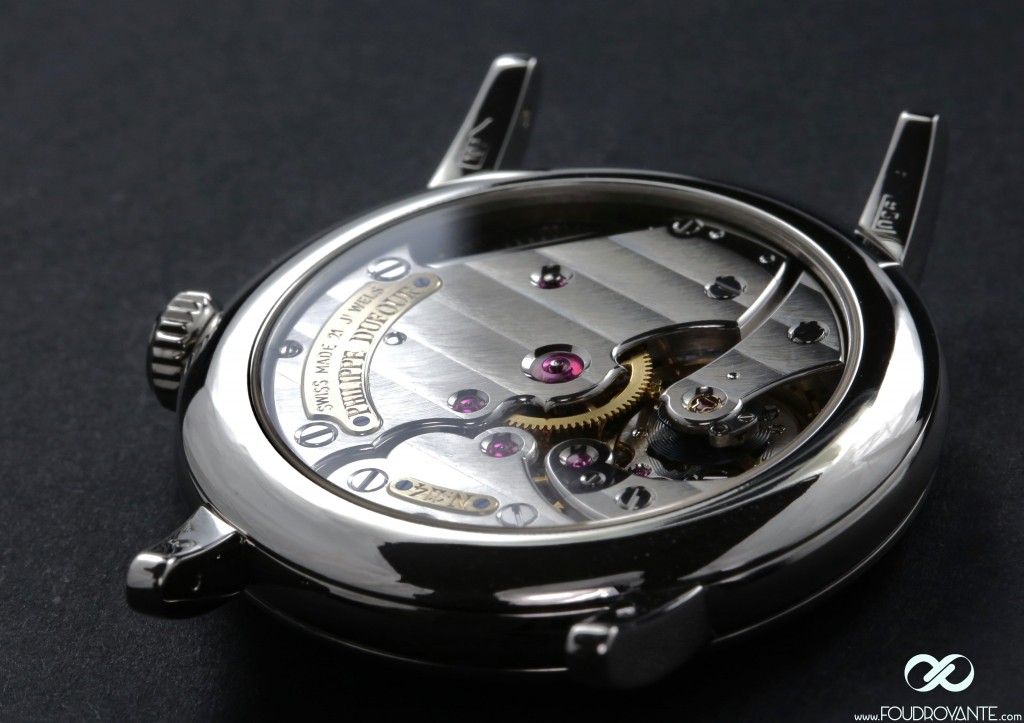
10-The Dufour Touch: the exterior angle bevel (also called “beak”)
Philippe said:
“When I designed the Grande Sonnerie, I decided to add depth to the central bridge with two “beaks”. As I tried making this distinctive feature common to all my works, I added it on the Duality as well as on the Simplicity.”
- Here is some exclusive information disclosed to Foudroyante: His “new project” will feature the same detail, so let’s it will be a watch.
This finishing, even if visually impressive, is not especially difficult to achieve, except from the fact that there is no room for mistake.
To create this bevel, Philippe works with three different types of files: square, barrette and crossing.
11-The seconds’ bridge: A debauchery of style
Or how to transform a simple seconds’ bridge into an art piece.
It features three inside angles; they sit at the intersection of the bridges rounding radiuses. Here is the way Philippe works: he marks the crossing point with a file. Then, with a bigger file he works alternatively towards the right or the left to shape the maillechort.
The domed bevel of Dufour works is visually delightful as it reflects light progressively.
If the effect is so beautiful, it is because of a constraint: Philippe states that it is impossible to obtain a perfectly 45° handmade bevel; it can only be achieved with a machine. Moreover, with a 45° angle, the contrast is very marked. This is called a “Black polish”: the surfaces go from black to white with no transition.
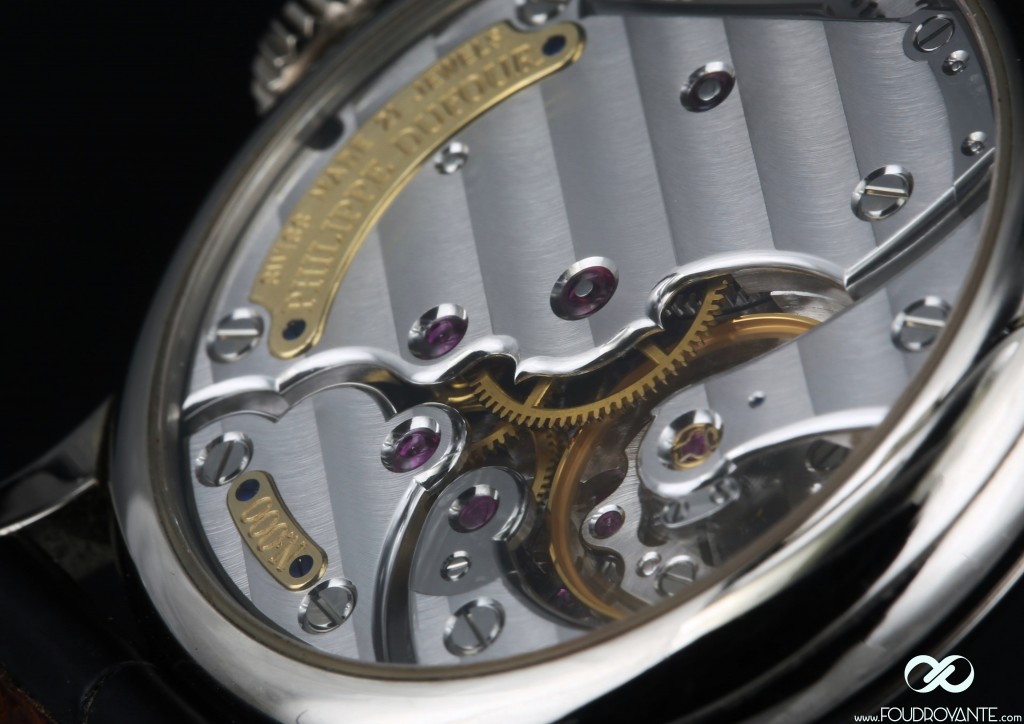
12-the engraved plates: innovative
It used to be an innovation, it is now widely seen. If these plates are obviously interesting from a visual standpoint, it is not the main preoccupation. To Philippe, the goal was to avoid damaging the delicate Geneva waves on the bridges, during an electro-plating operation designed to protect the gold from possible etchings (let’s not forget that the engraving process can also warp the bridge).
13-One exterior bevel too many: I disagree
- Here is where I, a spineless worm, disagree with the Sorcerer of watchmaking. Without humility and even with a bit of presumptuousness, I must admit that the lack of outside bevel is frustrating,
because the inside bevel on the other side (seconds bridge) doesn’t have a counterpart: just a classic round bevel. Philippe wanted to keep a classic rounded angle, and it is indeed the only one in the Simplicity.
14-Intersection between two lines: bucolic
This outside bevel sits right at the intersection of two lines.
I could be interpreted as a metaphor: the outline of a mountain showing through the morning fog at dawn.
In this topic about the exodus of the Parisian watchmakers toward Switzerland, I hypothesize that the watchmaking industry has been strongly influenced by its environment, when it settled in Jura.
And those superlative decorations, of which Philippe is the last herald, were also inspired by the Jura moutains’ landscape.
Philippe agrees: “If the Valaisians had manufactured the movement, the bevels would have been even more marked”; the Canton de Valais is especially craggy…
15- Half-width stone: also called demi-glace
The demi-glace ruby is different from the glace ruby because of the shape of its top part. Let’s say that a classic stone has a flat table. In the case of the mi-glace, the stone top part is cupped around the axle. This shape makes perfect sense if there are bezels or millings around the stone. It adds depth and increases the stone’s apparent size (a trick widely used in the XIXth century, which made the price of the watches look reasonable, when rubies and diamonds where natural).
16- Milling: bevels around the stones.
Philippe carves some type of bevel around the rubies and the screws: he starts with a drill whose slanted sides determine the angle, and finishes with a boxwood stick.
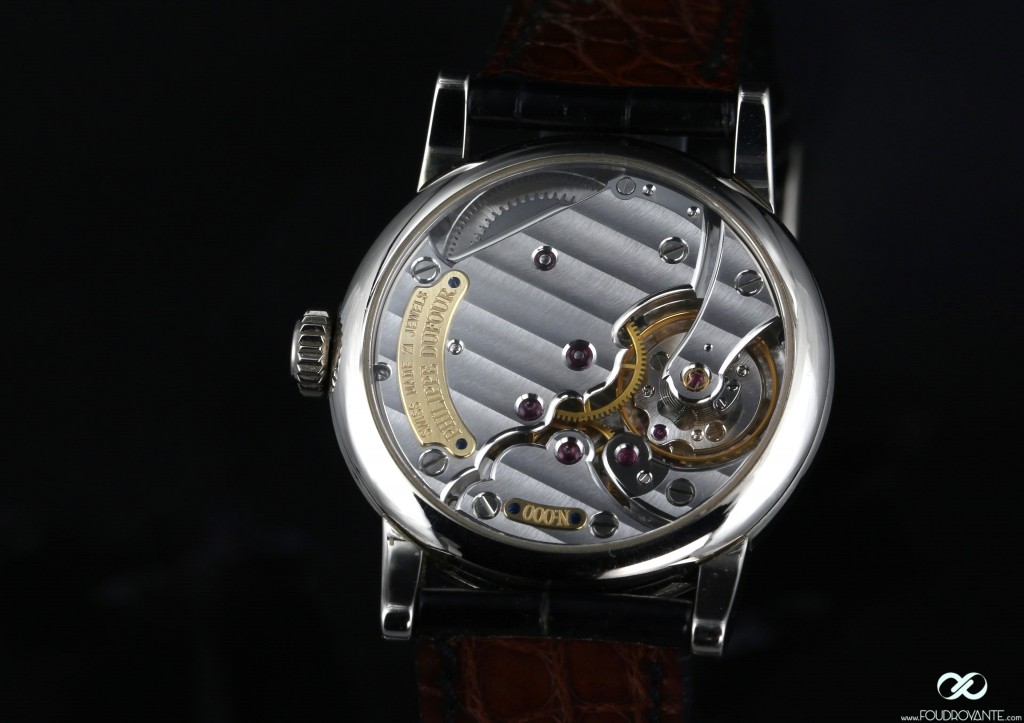
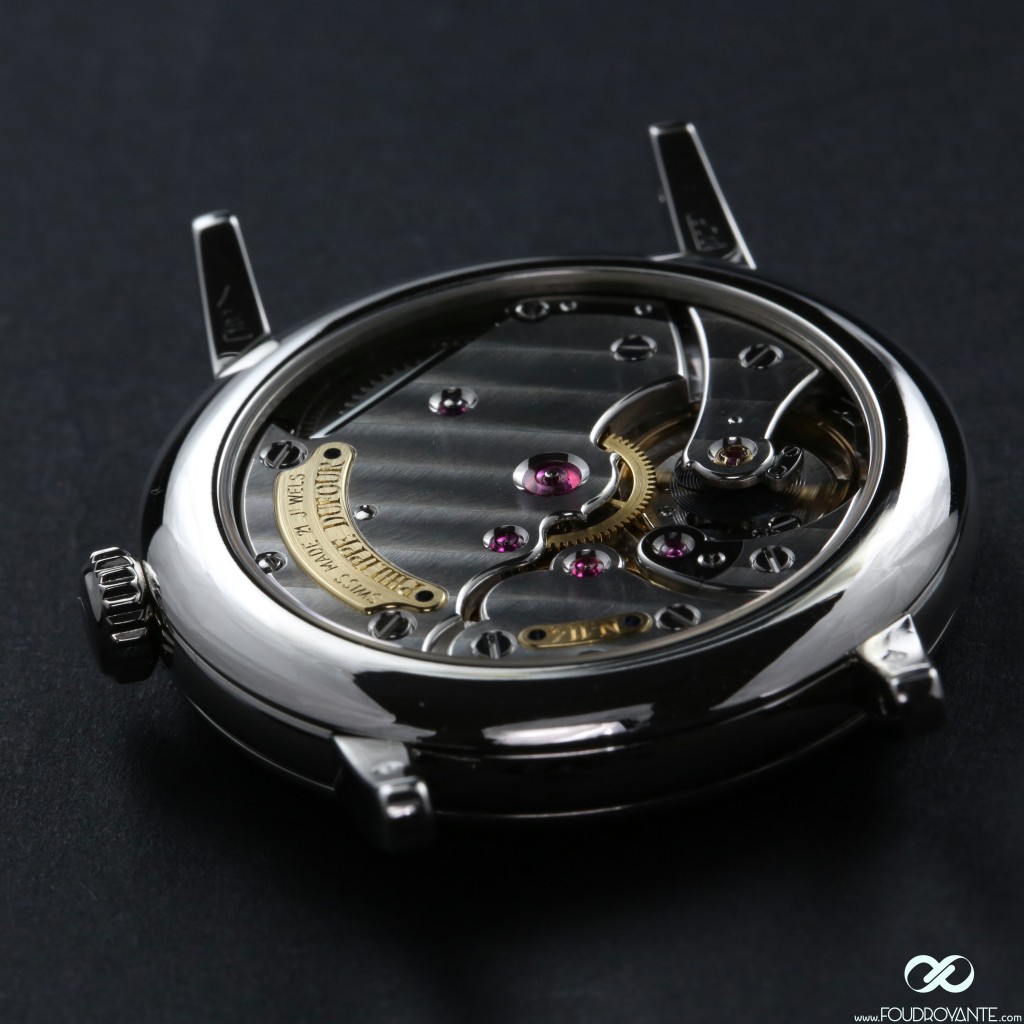
17-Outside bevel on the balance wheel bridge: Visual effect
On the Simplicity, because of the limits inherent to the tuning of the balance wheel, the bridge should be relatively small. To increase its apparent volume, Philippe added a tiny bevel which, for once, doesn’t sit at an intersection. In my opinion it is reminiscent of a rocky cliff.
18-Screw head notch: beveled
Black polished bevels, nothing less
19-Clearance between the bridges: same width
Take the interval 11a or the 1b, same clearance. This is quality.
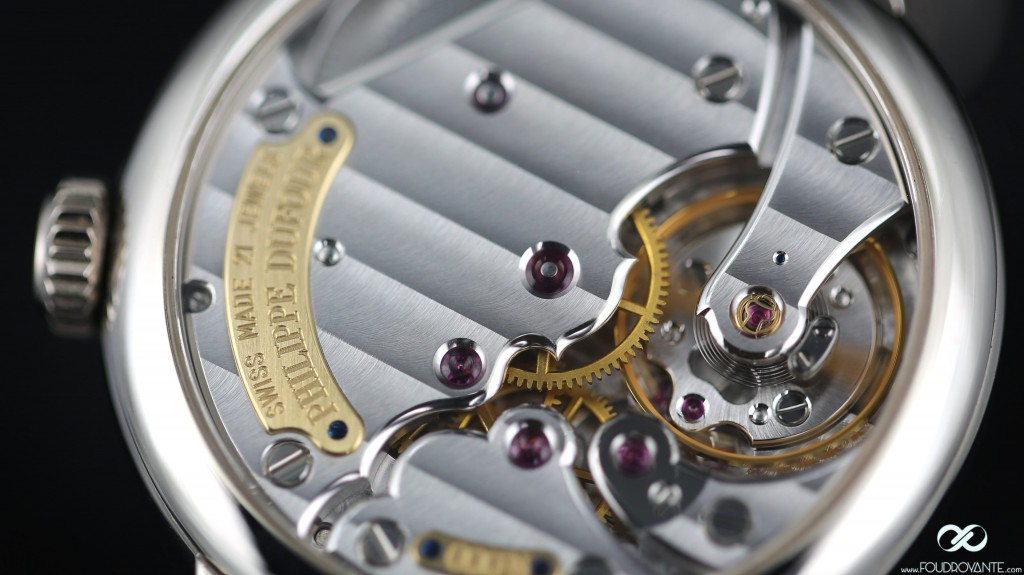
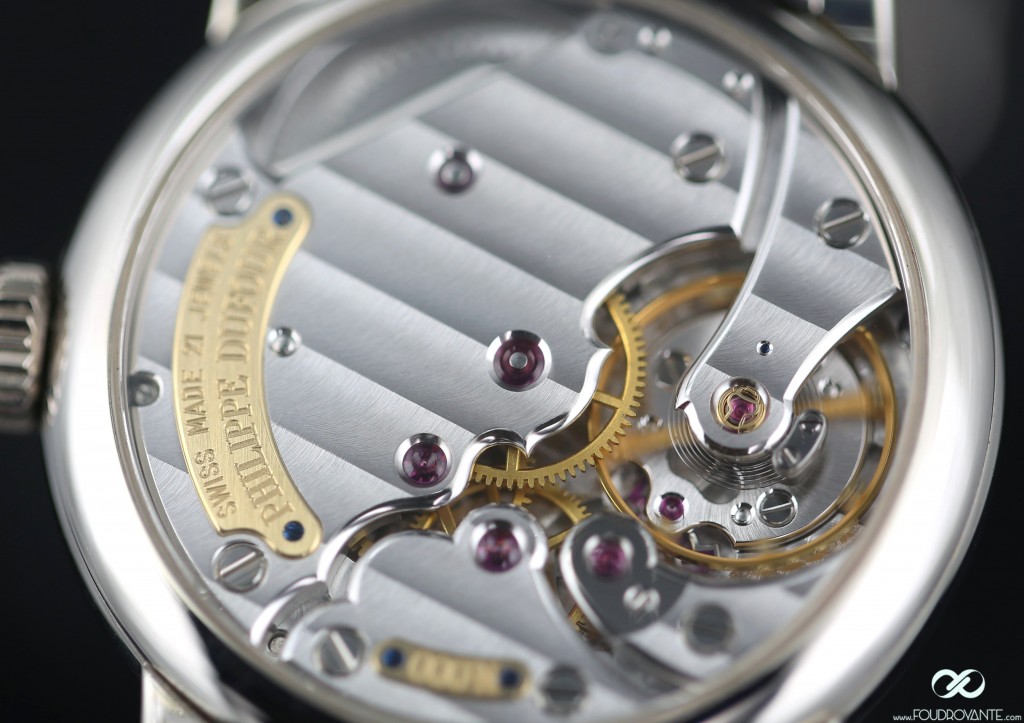
20-wheels polishing: with a wooden mill
The teeth are polished to remove any trace of machining, and to lessen friction. The polishing is done as quickly as possible to avoid any damage to the teeth’s profile. “Smoothing” who be a more appropriate term for this operation.
21-Beveling of the Barrel ratchet: with a wood mill
The ratchet is the top part of the barrel, the one which features teeth. This part, retained by the ratchet click, prevents the barrel from unwinding. It is polished by moving it around the wood mill.
22-Geneva waves: Cotes de Genève for rednecks
The Geneva waves on the caliber 11 are machined after the beveling operation. The goal is for the waves to feature the best look/removed material ratio, to avoid damaging the bevels, of course. Philippe proceeds with a Cotes de Genève machine, but he uses a mill with infinite vigilance…
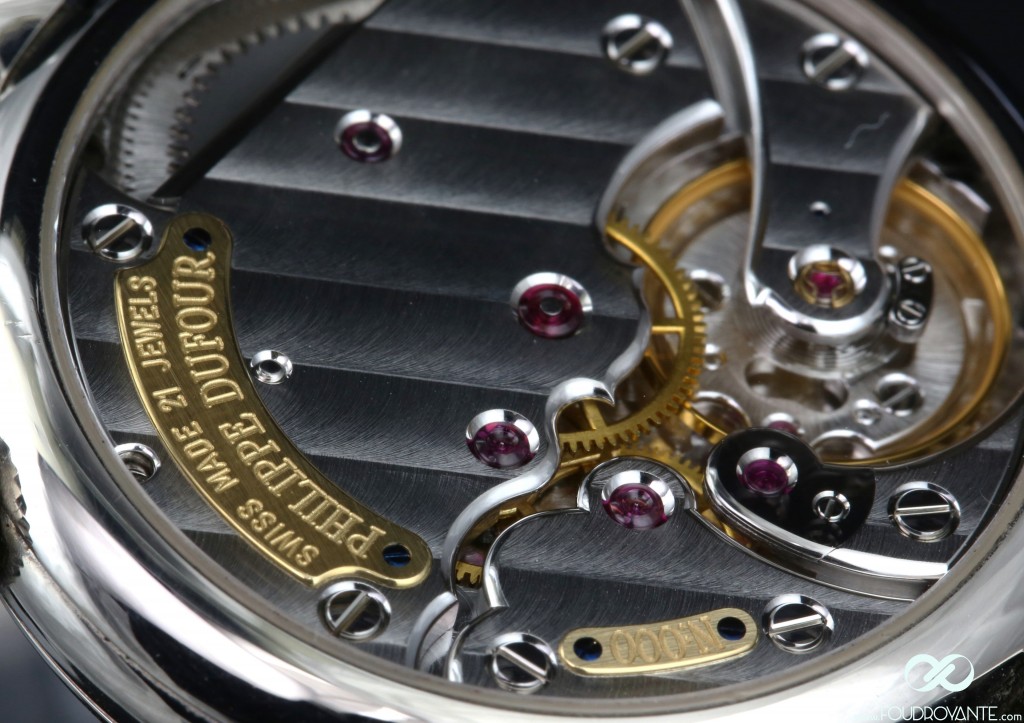
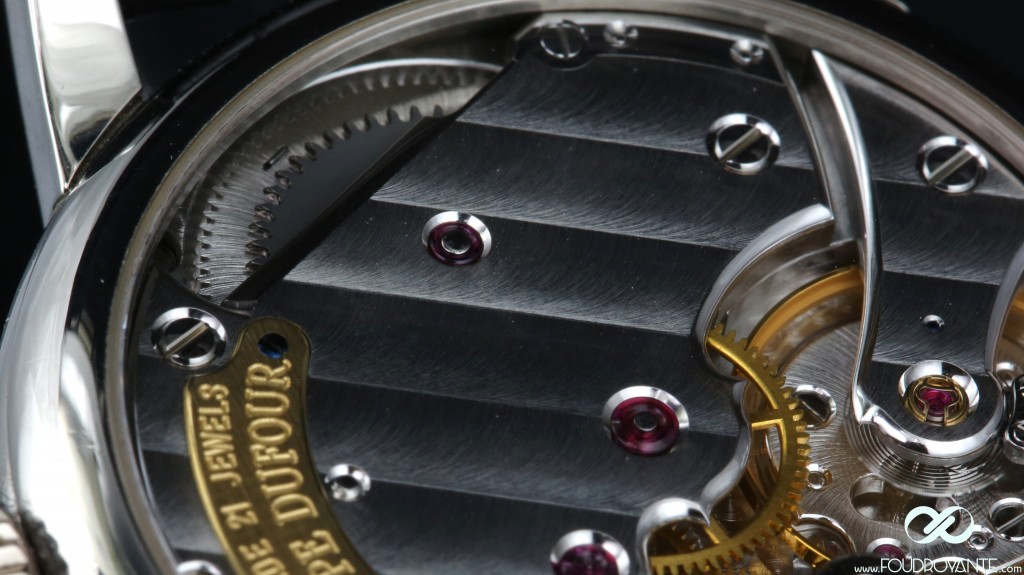
- It is said that the greatest zealots are the converted. It is true, I am one of them.
I have become a fanatic of Philippe Dufour’s work. During many tours of the most prestigious houses, I have usually been disappointed: assembly lines, white rooms, watchmakers working without passion.
But at Philippe’s workshop,I finally had the immense privilege of being drawn into an atmosphere worthy of the purest myth of the Swiss watchmaking industry.
- Spending an afternoon in Philippe’s workshop is like taking a ride in the De Lorean for a 50 year trip in the past: you get mesmerized by the wood and vintage tools’ warmth, it is messy, it is loud, there’s laughter, you see some encyclopedic knowledge in the works,
and Philippe works with a passion as timeless as the Simplicity.
Thanks to Philippe for this precious time and generosity.
Thank you, see you soon
Pif.
